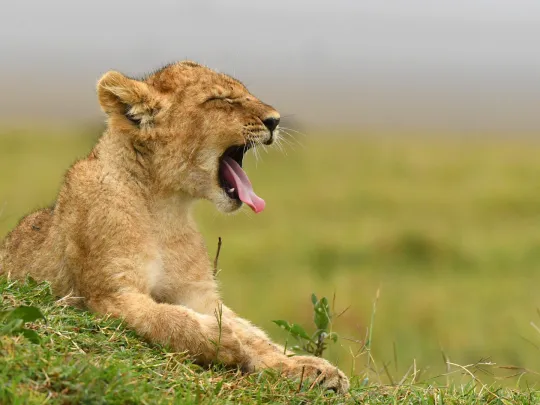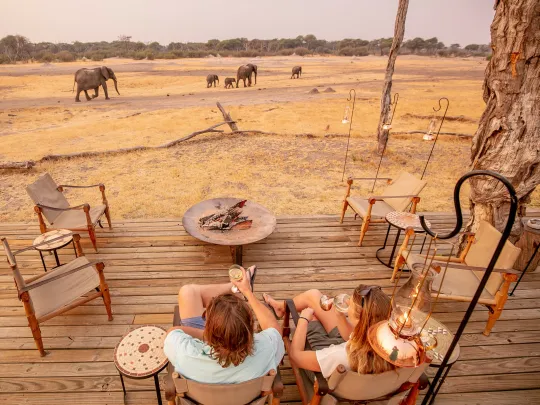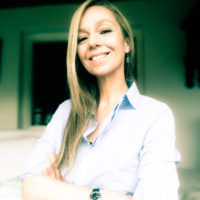Fine Art Wildlife Photography: An Interview with Wim van den Heever — Wildlife Photographer of the Year 2025
Few artists capture the untamed beauty of nature quite like Wim van den Heever. A master of light, patience, and emotion, his photographs blur the line between wildlife documentation and fine art. In this updated feature, we revisit our conversation with Wim and celebrate his remarkable achievement as Wildlife Photographer of the Year 2025, a title earned through a decade-long pursuit of one haunting image and a lifetime of devotion to the natural world.
[Updated October 2025]
Introduction: From Early Roots to Global Recognition
In October 2025, South African wildlife photographer Wim van den Heever was crowned Wildlife Photographer of the Year by the Natural History Museum, London, for his haunting image of a brown hyena wandering through the ghost town of Kolmanskop, Namibia.
It took Wim ten years to capture that one perfect frame —a testament to the patience, precision, and deep connection with nature that define his work.We first interviewed Wim back in 2020 to explore his journey into fine art wildlife photography. His reflections on the craft remain timeless, revealing the dedication, artistry, and emotion behind every image.
Early Beginnings: Growing Up with a Camera in Hand

Wim's "Beach Kings" won Nature's Best Photography Polar Category in 2017
Wild Wings Safaris: Talk us through your journey into wildlife photography.
Wim van den Heever: "Wildlife photography has been a family activity from day one. My parents, and especially my dad, were always into photography and looking for the next wildlife destination. We'd go on family holidays to Kruger, Etosha, Botswana — always with cameras in hand.
As kids, my brother and I always had a camera. When my dad upgraded, he'd pass down his old ones to us. Photography became more than a hobby; it was part of life. I wouldn't call it a passion. It's way beyond that. It's the way I live my life every day."
A South African Love Affair with the Bush

Big cat approaches
Wild Wings Safaris: Sounds like a typical South African upbringing — family holidays in the bush. Where do you think this affection for the African bush comes from?
Wim van den Heever: "I think South Africans' love of the bush comes from their love of simple things — braais, friends, family, the outdoors. And there's no better place to enjoy that than in the bush.
Kruger in particular ticks all the boxes. You can camp, it's safe, beautiful, affordable, and you can enjoy it on your own terms. If you want to be first at the gate in the morning, you can. Or sleep in, come back later, and have a braai listening to the sounds of the bush."
Career Highlights: Beyond Awards

"Career highlights are about the experiences — not the awards." —Wim van den Heever
Wild Wings Safaris: You've been shortlisted for and won categories in the BBC Natural History Museum Wildlife Photographer of the Year competition numerous times. Would you consider that a career highlight?
Wim van den Heever: "It's always great when your work is recognised, but for me, career highlights are about the experiences — not the awards.
Travelling to the Antarctic and Arctic, photographing the Great Migration in the Masai Mara, tracking jaguars in Brazil, red squirrels in Scotland, snow monkeys in Japan — those are the things that stand out.
Having my work featured in a magazine or competition is an honour, but what matters to me is being in the right place, at the right time, with the right animals under the right conditions."
Craft, Technique, and Fine Art Vision

Capturing emotion
Wild Wings Safaris: What goes into selecting a bucket-list destination?
Wim van den Heever: "There's a lot of careful planning. I need to make sure I've done my homework about the subject — is it feasible, what are my chances of success, does it justify the cost and time? Only then can I commit.
I travel with several cameras and dozens of lenses, but it's not about the gear. It's about knowing the subject, anticipating moments, and choosing the right technique for the emotion I want to capture."
Dangerous Beauty: The Thrill of the Wild

Duskey shark, Project 2014, Port St. John's sardine run
Wild Wings Safaris: What's your favourite animal to photograph?
Wim van den Heever: "Dangerous animals. Definitely the big cats — lions, leopards. They fill me with awe. There's nothing like diving with sharks or photographing polar bears as they move toward you. It's surreal to think you could be on their breakfast list.
Show me a big bull elephant and watch me lose my head," he laughs.
Understanding Behaviour: The Key to a Perfect Shot

Game on!
Wild Wings Safaris: How much of your research involves studying animal behaviour?
Wim van den Heever: "A lot. You can't just arrive and hope for the best. You need to understand how your subject lives, hunts, and moves — whether that's jaguars in Brazil or snow leopards in the Himalayas.
I spend a lot of time speaking to people who know more than I do. Success in wildlife photography comes from knowledge, patience, and respect for the animals."
What Fine Art Wildlife Photography Demands

"It's about emotion and atmosphere." —Wim van den Heever
Wild Wings Safaris: What sets fine art photography apart from other forms of photography?
Wim van den Heever: "There are so many ways to photograph a subject. But fine art is different. It's not about action or drama — it's about emotion and atmosphere.
A fine art image evokes a feeling. It gives the viewer space to reflect. The tones, the light, the composition — everything is deliberate.
You don't want a living-room print to make people feel hunted; you want them to feel wonder, awe, and peace."
The Value of a Fine Art Print

The circle of life
Wild Wings Safaris: Fine art wildlife photography often sells for high prices. How does one calculate the value of a piece?
Wim van den Heever: "It's about rarity, time, and meaning. You can spend years in the bush and come away with only a handful of shots worthy of a fine art print.
For me, it's not just technical mastery — it's emotional truth. The image has to mean something to me before it can mean something to others."
Inspiration and Influence
Wild Wings Safaris: Are there photographers whose work inspires you?
Wim van den Heever: "Sure. David Yarrow, Nick Brandt, Federico Veronesi — each has a distinct vision. They remind me that photography is art, not documentation."
What's Next on the Bucket List?
Wild Wings Safaris: What destinations are still on your bucket list?
Wim van den Heever: "I still need to get to Australia to tick off all my continents," he laughs. "But I'm drawn to places with wild, powerful animals. Tonga for humpback whales, Russia for Amur leopards, Chad for lions, Ethiopia for geladas and Simien foxes — those are still calling."
Full Circle: The Ghost of Kolmanskop

Ghost Town Visitor by Wildlife Photographer of the Year 2025, Wim van den Heever
Wim's Wildlife Photographer of the Year 2025 image — the elusive brown hyena moving through Namibia's abandoned diamond mine — feels like the culmination of everything he's shared here: patience, intuition, respect, and artistry.
"It took me ten years to finally get that one single image," Wim said after winning. "The ghost I'd always dreamt of."
It's a reminder that the world's rarest creatures — and the photographers who follow them — teach us the value of persistence, humility, and wonder.
Wrap-Up: Where Passion Meets Purpose
Fine art wildlife photography sits at the intersection of art and conservation. Wim's success is not just about a photograph; it's about a lifelong devotion to the wild and a desire to share its beauty in a way that moves people to care.
At Wild Wings Safaris, we've always believed that seeing Africa through an artist's lens can change how you see the world.
Ready to experience the wild through your own lens?
Let our expert safari planners craft a trip that brings you closer to Africa's untamed beauty — from Kruger's big cats to Namibia's haunting desert landscapes.
Contact us to start planning.
You may also want to look at

12 Wildlife Photography Tips for Your Next Safari (Beginner-Friendly Guide)
Avoid common mistakes and make the most of your photographic safari with these 12 practical wildlife photography tips. Perfect for beginners and keen enthusiasts, and updated with a fresh tip.

The Masai Mara: Is it worth visiting outside of migration season?
The Masai Mara in Kenya is most famous for the annual wildebeest migration, which peaks around August and September. But is this reserve worth visiting outside of migration season, after the great herds have moved on?

10 Day Zimbabwe Adventure Safari
This 10-day Zimbabwe safari takes you deep into the country's top national parks—Hwange, Matusadona, and Mana Pools—each offering a distinct and thrilling experience. Designed for wildlife lovers and adventurers alike, this itinerary blends game drives, walking safaris, and boat-based wildlife viewing for a full immersion into Zimbabwe's wildest corners. With three free scenic flights between destinations, the journey is as seamless as it is spectacular.
About the author

Dianne Kokkonidis was born in Johannesburg, grew up in the Transkei and spent years exploring Europe. She returned to South Africa to live on a farm in the Outeniqua Mountains when the call of Africa got too loud to ignore. She comes from a family of storytellers, so it's no surprise she's now found her way into writing about one of the oldest stories known to mankind - the lure of Africa.









